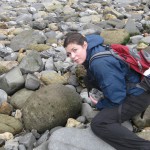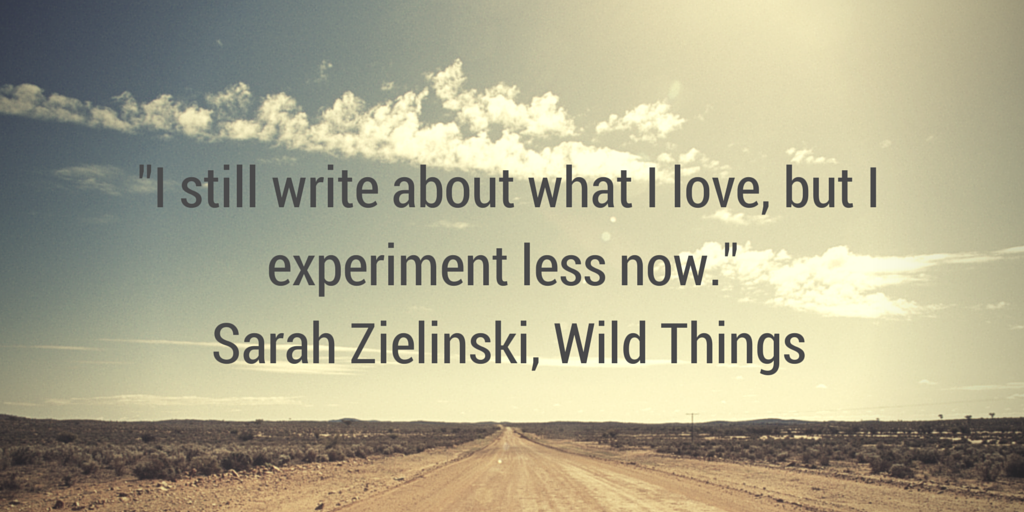Blogging for a science magazine
What is it like to blog for a science magazine? Is it different from blogging on your own independent Wordpress or BlogSpot platform? What's it like to have a blog editor? Do blogs change as they are moved from independent websites to magazine blog networks?
These are some of the questions I've been wondering about as I interview science bloggers for my PhD project (#MySciBlog), because science bloggers fill such a variety of roles for a variety of organizations as well as independent individual and group blogs. I figured the Science News blogging network was a good case study for a modern understanding the blogging approach of a traditional science magazine. The network features a selective and outstanding cast of science writers, several of whom had their own pre-existing blog(s) migrated to the network when it launched in September, 2013, a year ago this month. Two such writers include Bethany Brookshire (aka SciCurious) and Sarah Zielinski. Intrigued by their experiences of moving their blog(s) to Science News within the last year, I interviewed them via e-mail to get their perspectives on this new phase of their science blogging.
I think their answers are intriguing, and really open up the world inside the maturing of science blogs. Enjoy!
Q: How did you get into blogging at Science News? Were you recruited? If so, how?
Bethany Brookshire: I actually applied for a position as a science education writer at Science News. During the application process, they talked to me separately about blogging for Science News as a freelancer. When we all realized that I wanted to do both things, it seemed like a perfect fit. I’d come in as the science education writer and continue writing as Scicurious at the Science News site.
Sarah Zielinski: For the last couple of years, I’ve worked off and on at Science News as a fill-in editor, so they know me well. The editors there were reading my blog, Wild Things, on a regular basis and eyeing it as they prepared to add blogs to the magazine’s website. A few months before the website relaunched, I was asked to submit a proposal for moving Wild Things to SN, and it was accepted.
Q: Can you briefly describe the culture at Science News, and how that might contribute to your blogging there?
Bethany Brookshire: I love the people I get to work with. Everyone here is just a consummate professional at the top of their game, and I especially love that I have so many female role models. There are so many writers and editors here that I respect so much! Writers like Laura Sanders, Tina Saey and Susan Milius give me something to aspire to when I “grow up,” and editors like Kate Travis and Janet Raloff have taught me just enormous amounts about journalism and writing, while still letting me be my somewhat wild and creative self. The CCO Mike Mills has been an amazing mentor, he encourages me to develop my ideas and take them to the next level. During my time here, I have seen my writing improve by leaps and bounds, though I’ve still got a long way to go. I think that I’ve become much more rigorous than I ever was before.
Sarah Zielinski: I’ve always found SN to be a friendly place full of writers and editors who work hard and are really, really good at what they do. For the purposes of blogging, this means that I always have someone I can ask for advice. And it pushes me to do better.
Q: What role do you think your science blog fills at Science News? How does your blog work with, compliment or contribute to the rest of the magazine's content?
Bethany Brookshire: I have TWO blogs at Science News. One is Scicurious. When I arrived, we did some talking about what Scicurious would be, and I’ve been very happy with the result. Science News does news, and Scicurious fulfills some of the Monday morning quarterbacking role. I have more space to cover pieces in depth, to look at stories that might have been covered too credulously by other outlets, or to take stories that might not otherwise be news, and bring them forward into the light. The theme behind the blog is “a peek behind the science curtain,” and it allows me to talk about things like scientific culture or trends in major fields. These are things that might never have received attention at Science News, but my blog can take them on.
The other blog is Eureka! Lab, a brand new blog focused on students in middle and high school. I’m so happy to work on this blog! Science News has been running Science News for Students for many years now: Real science news, written at the seventh grade level. I love this because I do feel that frequently there’s a big gap in science reporting. There’s a lot of “HEY KIDS! DO YOU LIKE SCIENCE?!” devoted to kids under 10, but in middle and high school, many people just assume students read at an adult level. This leaves out a huge number of students. Science News for Students tackles this head on. It’s not condescending, it’s not cutesy. It’s science news that students can care about. I’m so proud to be able to contribute! Eureka! Lab is the active arm of Science News for Students. I write about apps students can try, citizen science they can get involved in and experiments they can do at home. I also write about high school students who get into scientific labs, how they get the opportunities and what they learn. The goal is to inspire students to try science for themselves. To get out there and apply for that lab position, to design a scientific experiment. The blog fills a niche that we never had before, active science experiments for teens.
http://youtu.be/FxVG7HjdcnM
Stalking squirrels for science, Bethany Brookshire, Eureka! Lab
Sarah Zielinski: Wild Things overlaps pretty heavily with the life sciences beat covered by long-time SN writer Susan Milius. Susan—and the magazine—gets first dibs on everything in the journals. That doesn’t mean I can’t write about the same topic or paper; I just have to find a different angle for the blog. But because I write a blog, and not news, I have more freedom in how I write about science. I can be more conversational or fun, or provide context for something you might have seen in the news. Or I can just help SN provide more coverage in the life sciences—there are so many interesting discoveries and not enough writers to cover it all.
Q: Has your blog evolved since it started at or moved to Science News?
Bethany Brookshire: Well, I now have two blogs instead of one. :) At Scicurious, my blogging has become far more professional. I always have outside commenters, I’ve become a lot more guarded about presenting my own opinion. I really love this opportunity to learn new skills. We have also taken Scicurious more into the stories behind science, taking an in depth look at things like techniques and the stories behind papers.
And of course, Eureka! Lab is brand new, it’s only a year old. It’s evolving as we go. I’m especially excited by what is going on right now. I’m in the middle of a project called Cookie Science, where I use an experiment with cookies to show how science is conducted. I’m hoping that it will inspire more students to design their own experiments.
Sarah Zielinski: I started my blog as a place for me to write about things I love—animals, plants, ecology—and experiment with my writing (even tackling fiction at one time). I still write about what I love, but I experiment less now.
Q: Is blogging for Science News different from blogging independently? If so, how/why? For other bloggers that write on their own, can you describe what is it like to have a blog editor? What are the benefits? Are there any drawbacks?
Bethany Brookshire: Yes it’s very different. For Scicurious, I have to pitch things, and make sure the beat reporters aren’t covering them, as they have first dibs. I have to have a clear angle, I can’t start writing and have my epiphany along the way. This has been really helpful, as I’m now forced to organize my ideas.
For Eureka! Lab, it’s been a big chance to learn. I have to write each piece at the 7th grade level, which is quite a challenge! I also have to make sure that there’s an educational angle to everything I do. I spend a lot of time keeping my audience in mind in a way I never did with Scicurious.
I love having an editor. I’ve always wanted one, and it’s fantastic. I know that I don’t produce perfect prose, and it’s so great to have that other set of eyes, someone to say “what are you trying to say,” someone to push me to be better. Someone to be a test audience and say “I don’t understand this word,” or “what does this mean?” Every single edited piece is far, far better than anything I turned in before.
The only drawback? I can’t just slam something out and hit publish! When I really want to get my thoughts out there, or when I’m really excited about a topic, it kind of sucks to have to hold my horses like that. But it’s well worth it for a polished product.
Sarah Zielinski: Definitely. Everything I write is planned well beforehand (and sometimes negotiated to prevent too much overlap with what the magazine is doing), then edited and posted days after I’ve written it. I actually like being edited. My editor doesn’t do a lot, but she does help to point out places that might be confusing or that need more explanation. The end product is a better blog post. But the long delay between idea and eventual posting does mean that it’s pretty much impossible to respond to anything in the news very quickly.




